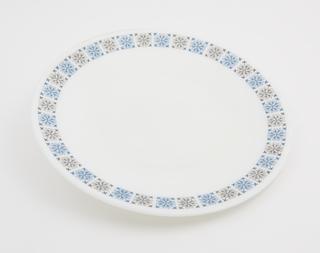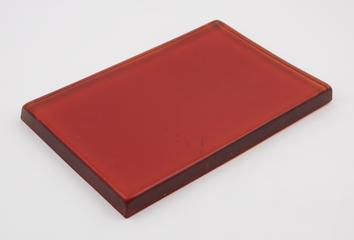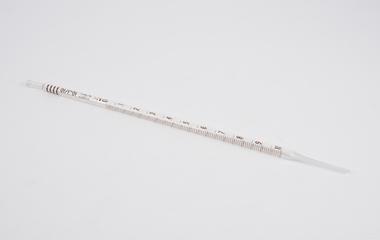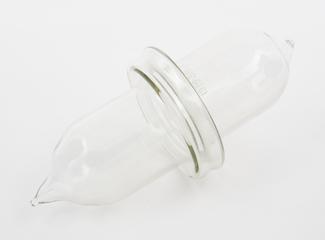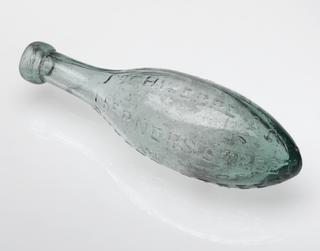
Pyrex saucer in Old Town Blue Design.
- Made:
- 1972-1982 in United States
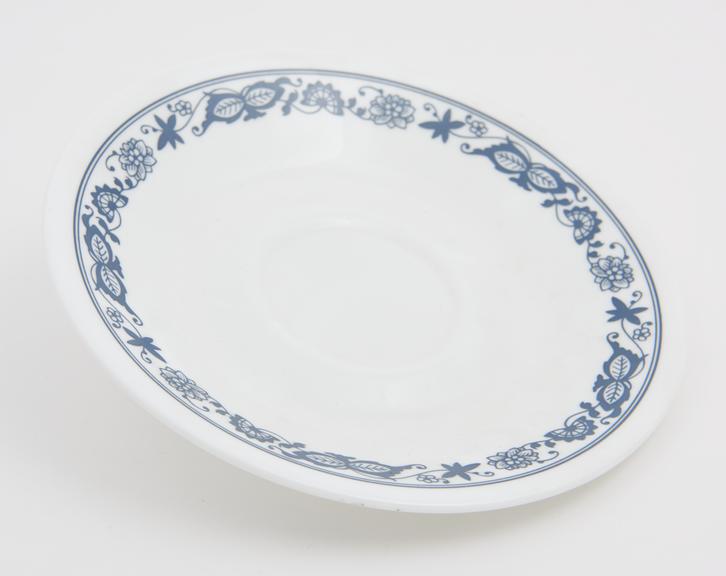
Pyrex saucer in Old Town Blue Design.
This saucer (alongside the other Pyrex dinnerware in the collection) tells the story of Pyrex ‘livingware’ – which as a product is an output of, but also part, of a movement towards the invention of more durable materials at the start of the 20th century. Pyrex is heat-resistant glassware. It is a global product not just in its consumption but development, crossing from Europe to the USA and back again in its conception, development, and manufacture.
Whilst it was initially marketed as high end (adverts showed a maid using the cookware), it was deemed too expensive. However, Corning (Pyrex’s parent company) was able to capitalise on the emergence of the ‘home economics’ industry and ‘clean living’ ideals after World War II to secure its popularity. The company hired scientist and home economist , Lucy Maltby, to establish a test kitchen to evaluate and advocate Pyrex products. Her work influenced design changes (such as making the cake pans smaller so two could sit side by side in a conventionally sized oven) and had such an impact as to coin the mantra ‘What does Lucy think?’
Pyrex also responded to the evolution of the kitchen into a communal living space: henceforth the colourful designs which look good whilst cooking, serving, and dining.
Whilst newly produced Pyrex continues to be popular today, there is also a nostalgia to the product as a collector’s item, with websites dedicated to determining the rarity and value of ‘vintage’ collections, demonstrating the emotional connection to the product.
The Old Town Blue design is the epitome of American Pyrex produced in the 1970s. These objects were made in the USA and can be identified as such by the ‘Corelle by Corning, Corning U.S.A.’ branding on the base. The Old Town Blue design is ‘nostalgic’ and ‘folksy’, to hark back to ‘old-fashioned’ pottery cookware. The design speaks to a well-established product, on the market long enough to incorporate an ironic homage to the ‘old-fashioned’ pottery and ceramics that came before it.

